Nuts are often celebrated as a nutritious, convenient snack. They’re packed with healthy fats, protein, and a variety of vitamins and minerals. However, not all “nuts” are created equal, and certain varieties—or certain preparations—can potentially do more harm than good when consumed regularly. In this article, we’ll explore six nuts that deserve a place in your diet due to their notable health benefits, and six types (or forms) of nuts you might want to think twice about before making them a daily staple.
Nuts You Should Be Eating
1. Almonds
Why they’re great:
Almonds are one of the most popular tree nuts, thanks to their impressive nutrient profile. They’re rich in vitamin E, an antioxidant that helps protect cells from damage, and they offer a good dose of magnesium, which supports bone health and muscle function. Almonds are also high in healthy monounsaturated fats, known for supporting heart health by potentially improving cholesterol levels.
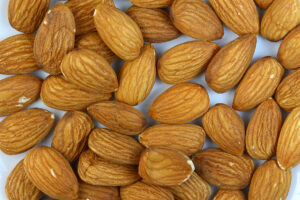
How to enjoy them:Snack on a handful of raw or lightly roasted almonds, use almond butter on whole-grain toast, or sprinkle sliced almonds over salads or oatmeal. Avoid heavily salted or sweetened varieties to keep your overall sodium and sugar intake in check.
2. Walnuts
Why they’re great:
Walnuts are often lauded for their high omega-3 fatty acid content, particularly alpha-linolenic acid (ALA). Omega-3s support cardiovascular health by helping reduce inflammation and improving blood lipid profiles. They also contain antioxidants like polyphenols, which can help protect against oxidative stress.

How to enjoy them:
Walnuts are delicious when chopped and added to baked goods, salads, or yogurt parfaits. They have a richer, slightly bitter flavor compared to some other nuts, so you can combine them with sweeter ingredients like dried fruits or honey for a balanced taste.
3. Pistachios
Why they’re great:
Pistachios are unique because they’re relatively lower in calories compared to many other nuts while still offering a solid amount of protein and fiber. They contain beneficial compounds like lutein and zeaxanthin—important for eye health—and a variety of vitamins and minerals such as B6, thiamine, and potassium. The act of shelling pistachios can also help with portion control, because it slows down your snacking and increases mindfulness.
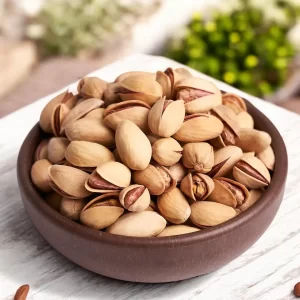
How to enjoy them:
A small bowl of pistachios makes for a satisfying snack. Opt for unsalted or lightly salted varieties. You can also crush pistachios and use them as a crunchy topping for fish, chicken, or roasted vegetables.
4. Cashews
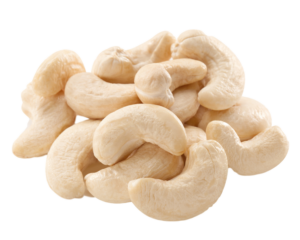
Why they’re great:
Cashews boast a creamy texture and a mildly sweet flavor, making them a favorite in both sweet and savory dishes. They provide minerals such as copper, magnesium, and manganese, which are all critical for bone and immune health. Cashews also contain heart-healthy monounsaturated fats similar to those found in olive oil.
How to enjoy them:
Use cashews in stir-fries, curries (cashew-based sauces are thick, rich, and delicious), or enjoy them as a standalone snack. Raw cashew butter is another tasty and versatile spread for sandwiches or fruit slices.
5. Brazil Nuts
Why they’re great:
Brazil nuts are one of the richest dietary sources of selenium, an essential mineral important for thyroid function, immune health, and antioxidant defense systems. Just one or two Brazil nuts a day can meet (or exceed) your daily selenium needs. They also contain healthy fats and small amounts of other vital minerals.
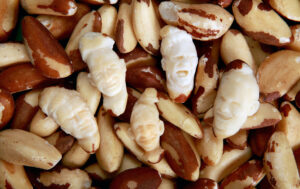
How to enjoy them:
Because of their exceptionally high selenium content, it’s important to eat Brazil nuts in moderation—one to three per day is generally recommended. You can chop and mix them into granola or enjoy them as an occasional standalone snack.
6. Hazelnuts
Why they’re great:
Hazelnuts (or filberts) often come to mind when thinking of chocolate spreads, but on their own, they’re a nutritious option. They’re a good source of vitamin E, manganese, and healthy fats, and they also contain fiber. Their distinctive flavor lends itself well to both sweet and savory recipes.
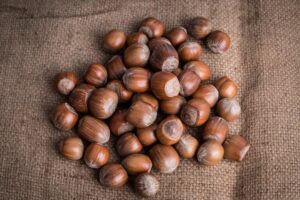
How to enjoy them:
Hazelnuts can be chopped or ground for use in baked goods, sprinkled on salads, or blended into homemade nut spreads. As with other nuts, choose plain or lightly roasted hazelnuts to avoid excess salt and sugar.
Nuts (or Nut Forms) You Should Think Twice About
1. Peanuts (When Mold-Contaminated or Highly Processed)
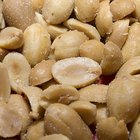
Why you should be cautious:
Though peanuts are technically legumes—not tree nuts—they’re often grouped alongside nuts. Peanuts themselves can be a decent source of protein and healthy fats. However, a major concern is the presence of aflatoxin, a toxic substance produced by certain molds that can grow on peanuts in improper storage conditions. Additionally, many peanut products (peanut butter, roasted peanuts) can be extremely high in salt, sugar, or hydrogenated oils, which counteract the potential health benefits.
How to be safer:
Look for high-quality, reputable brands that test for aflatoxins, and opt for natural, minimally processed peanut products. Store peanuts in a cool, dry place to minimize mold growth.
2. Candied or Honey-Roasted Nuts

Why you should be cautious:
Nuts themselves are healthy, but once they’re coated in sugar, syrup, or other sweeteners, you’re adding a significant amount of empty calories and potentially spiking your blood sugar. Candied nuts can also be quite high in sodium, depending on the recipe. This combination of sugar and salt can quickly turn a nutritious snack into a dessert-like indulgence.
What to do instead:
If you crave sweetness, consider lightly roasting raw nuts with just a drizzle of honey or a sprinkle of cinnamon at home. Control your portion sizes and avoid overindulging.
3. Heavily Salted Nuts
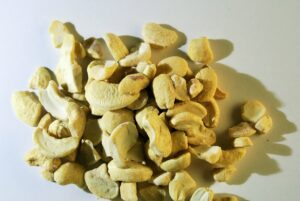
Why you should be cautious:
Salt is often used to enhance flavor, but consuming too much sodium is linked to high blood pressure and an increased risk of heart disease. While nuts are a great snack, heavily salted versions can contribute to exceeding daily sodium recommendations, especially if they’re a go-to snack throughout the day.
How to be healthier:
Opt for unsalted or lightly salted options. If you find unsalted nuts too bland, mix them half-and-half with salted nuts to slowly train your taste buds and reduce your overall sodium intake.
4. Macadamia Nuts (If You’re Watching Your Calories)
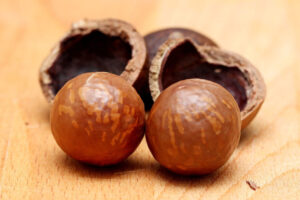
Why you should be cautious:
Macadamia nuts are deliciously buttery and do contain healthy monounsaturated fats. However, they’re also one of the most calorie-dense nuts, with about 200 calories per small handful (roughly 10-12 nuts). If you’re carefully monitoring calorie intake—whether for weight management or health reasons—macadamias can rapidly tip the scale when eaten mindlessly.
How to enjoy them responsibly:
Stick to small portions (about an ounce) and savor them slowly. This way, you can enjoy the unique flavor without overdoing the calories.
5. Betel Nuts

Why you should be cautious:
Betel nuts are not commonly consumed in Western diets, but they’re widely used in certain parts of Asia for their stimulant effect. Chewing betel nuts is associated with a range of health risks, including an increased risk of oral cancers, gum disease, and addiction due to their psychoactive properties.
What to consider:
Given the well-documented health concerns, betel nuts are generally not recommended as a dietary choice. If you are in a region where betel nuts are part of cultural practices, be aware of the associated risks.
6. Cashews (Raw and Unprocessed)

Why you should be cautious:
Cashews in the grocery store are often labeled “raw,” but they’ve typically been steamed or processed to remove the toxic shell oil (urushiol)—the same compound found in poison ivy. Truly raw, unprocessed cashews can be harmful and lead to severe skin irritation or allergic reactions.
How to avoid problems:
Always purchase cashews from reputable sources, and make sure they’ve been properly processed. If you’re experimenting with unprocessed nuts at home, be extremely cautious and understand that raw cashews must be handled properly to remove urushiol.
Final Thoughts
Nuts can play a crucial role in a balanced, nutritious diet. They offer protein, healthy fats, vitamins, and minerals that support everything from heart health to immune function. The key is to choose high-quality, minimally processed options and to be mindful of portion sizes. While some nuts, like almonds, walnuts, and pistachios, are excellent choices for regular consumption, others—or certain forms—may come with added sugars, high salt levels, or potential health risks that overshadow their nutritional value.
In the end, moderation is essential. Even the healthiest nuts can lead to weight gain or nutritional imbalances if eaten in large quantities. By focusing on the right varieties and preparing them in health-conscious ways, you’ll be able to reap the many benefits nuts have to offer while avoiding the downsides. As always, if you have specific health concerns or dietary restrictions, it’s best to consult a nutritionist or healthcare professional for personalized guidance.
